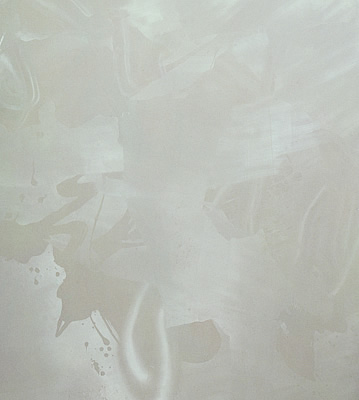
Recently my practice has sought to engage with extending the possibilities of painting, both materially and as an historical frame. A characteristic feature of the paintings is their visual instability: the works’ extreme responsiveness to light means, firstly, that at any two angles the viewer experiences subtly or dramatically varying images; secondly, when exhibited in different positions their appearance fundamentally alters. These factors prompt a bodily encounter with the works as objects in a specific space, which can only be understood through drawing together previous impressions from different positions. Another characteristic is confounding the possibility of adequate photographic documentation. How can a work whose appearance shifts fundamentally according to changes in light be reduced to one definite instance? How can a work which changes according to how the viewer’s movements affect the space’s light be related to an fixed image? And even if multiple images are used, how can a single lens capture a phenomenon which can appear different in each of the beholder’s eyes?
Contact: damian@ntmm.org
